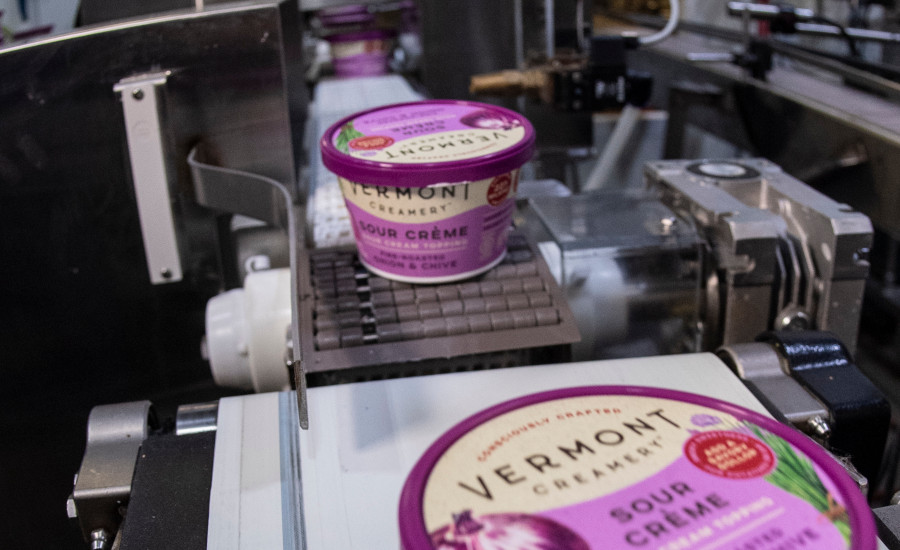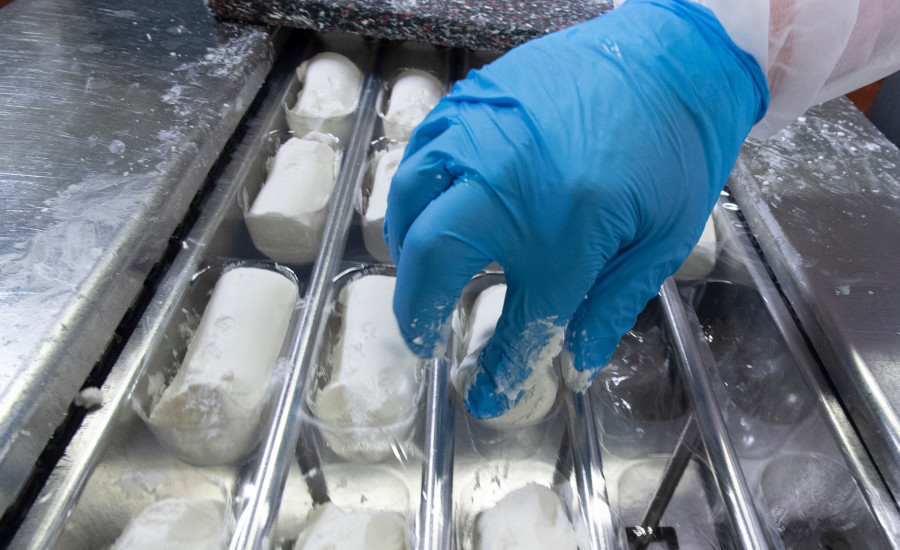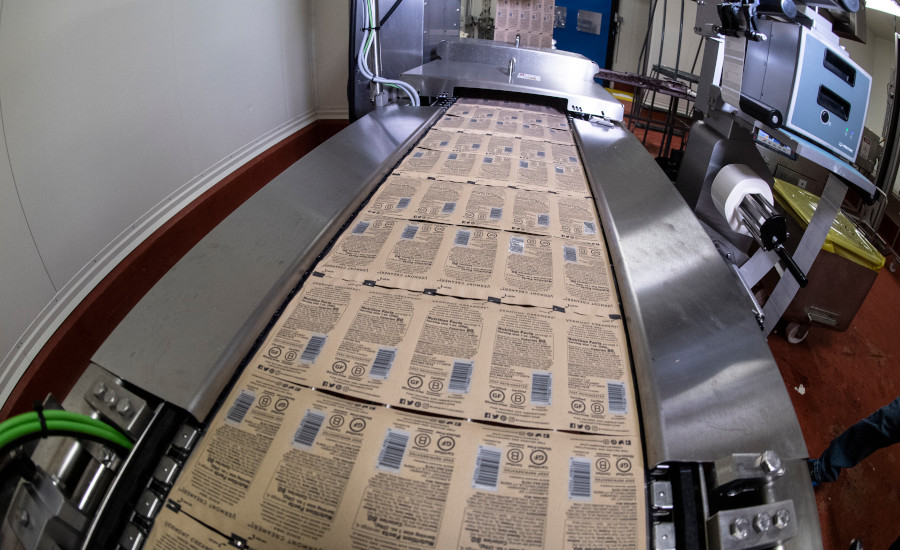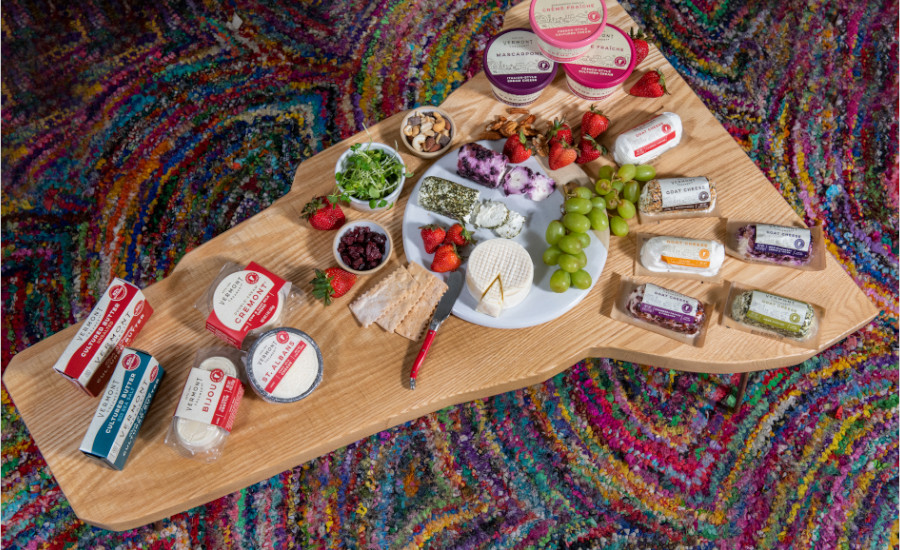Vermont Creamery’s processing facilities look a little bit different today than they did 38 years ago when the company was founded as a two-person artisan operation (see the processor profile). Back in 1984, the Websterville, Vt.-based dairy processor made fresh goat cheese in less than 5,000 square feet of a building. But as the company expanded its product line to include aged cheeses, butter, and culinary creams, the processing operations expanded as well.
The first expansion came in 2006, with the addition of an aged cheese building, notes Rick Bart, director of operations. That was soon followed by a doubling of the square footage for its fresh cheese packaging and boxing operations. Then in 2014, Vermont Creamery expanded its aged cheese facility to boost its processing and aging capacity.
“Our latest expansion was in 2019-2020 with our intake, culturing, and utilities systems,” he says. “We also increased our cold storage and warehouse capacity to meet customer logistic demand.”
Today, Vermont Creamery boasts almost 100,000 square feet of production, cold storage, warehouse, and office space at its Websterville location, Bart notes. On the processing side of the business, the company now employs 103 people. And the processing facility has the capacity to culture up to over half-a-million pounds per day of milk and cream across three shifts.
Decades of culturing expertise
During Dairy Foods’ visit, Vermont Creamery was making several cultured dairy products, including goat cheese logs made with pasteurized cultured goats’ milk, culinary cream, sour cream, and cultured butter. According to Adeline Druart, Vermont Creamery’s president, the company “has developed a unique body of knowledge around culturing dairy products” over the last 38 years that allows it to bring a rich taste and texture to products.

“We focus on ‘taste above all’ as our approach to product development and, therefore, will take the time to maximize aroma production in a long maturation process,” she says. “The result is a rich and complex flavor with hazelnut notes blended with a pleasant lactic tang.
The facility recently added new clean-in-place systems, butter churning and packaging equipment, silos, a milk receiving bay, a new boiler and a glycol refrigeration system.
“The unique step of culturing in our manufacturing allows us to explore new categories with differentiated positioning, and offering superior taste to products that are made without culturing,” Druart adds. “Our creamery has a lot of flexibility, multiple technologies, and processes that enable us to be agile, innovative, and move with speed.”
Plenty of new bells and whistles
Speaking of technologies, Vermont Creamery’s production facility relies on automated temperature controls, multiple types of sensors, and modern fillers and lab equipment, Bart says. On the equipment side, the facility recently added new clean-in-place systems, butter churning and packaging equipment, silos, a milk receiving bay, a new boiler, and a glycol refrigeration system. More updates are planned.
“We’re looking forward to upgraded process control systems for culturing vats, including automated temperature control,” he notes. “Additionally, [we will be adding] upgraded process control for product mixing/batching, including load cells on batch tanks, flow meters, and variable-speed control.”

All of the newer bells and whistles help support Vermont Creamery’s growing product consistency and portfolio, which has evolved in recent years from a specialty cheese and culinary cream collection to an expanded line of specialty cheeses as well as retail dairy case offerings, Bart says. During the past four years, the company increased its workforce by approximately 50% to meet the demand for its products.
Although its processing facility has grown tremendously, Vermont Creamery still retains its artisan approach to product creation. “We’ve managed to scale for retail growth and expansion without compromising the quality, artisanal taste, human touch, and look that make our product stand out on shelf,” Bart points out. “We’re very careful to optimize our process without taking shortcuts on quality; it’s an important guardrail we have established for ourselves.”
Focused on safety and sustainability
Vermont Creamery pays as much attention to its employee and food safety programs as it does to the processing of its products. On the employee safety side, Bart points to commitment and involvement at all levels when it comes to identifying and mitigating hazards with one of his top priorities being “building a safety culture where everyone understands the importance of the right processes to ensure we keep our people safe.”
And on the food safety side, the company has built “a strong quality and food safety culture” — one that prioritizes food safety and food-safety education for the entire team, as well as gives ownership to everyone.
“I’m proud of the robust food safety and quality programs in place, along with a well-trained and engaged workforce that carries them out,” Bart says. “All of our finished product goes through careful testing prior to release. Key indicators we monitor include first-pass quality and consumer complaints.”
Sustainability is also a major focus within processing operations. As a Certified B Corporation, Vermont Creamery is committed to having a positive impact, explains Eliza Leeper, mission and customer manager. Its four-part Sustainable Business Strategy guides the impact the company has on the environment, communities, employees, and the supply chain.

“As we have expanded our footprint rapidly, we have made investments in our facilities to reduce our energy, chemical, and water usage,” she says. “With support from Efficiency Vermont, we have switched our lighting over to LED where possible. In 2020, Vermont Creamery switched to 100% renewable energy for all our buildings through Green Mountain Power’s Cow Power program, a program that allows Vermont Creamery to pay a premium for renewable energy created on farms. The farms receive a portion of this premium, increasing the positive impact on our farmers.”
As a Certified B Corporation, Vermont Creamery is committed to having a positive impact.
More recently, in 2021, Vermont Creamery began a five-year sustainable packaging initiative that aims to remove hard-to-recycle plastics and other packaging, Leeper says, focusing instead on recyclability and compostability for its largest-volume offerings. In addition, the processing facility sends its whey and other byproducts to Goodrich Farms, where it is converted into renewable natural gas via an onsite biodigester managed by Vanguard Renewables.

All of these efforts — and others — align with Vermont Creamery’s mission to be a company that makes “dairy that tastes better because it’s made better.”
“We're on a mission to make products that taste extraordinary, while spending equal energy on ensuring our business makes a positive impact on the world,” the company states on its website. “Our goal here at Vermont Creamery is to use our success to create a positive ‘handprint’ on everyone that our business touches — our employees, customers, farmers, communities, and our friends across the country who enjoy our products as a meaningful and delicious part of their lives.”


.jpg?height=200&t=1630591584&width=200)
